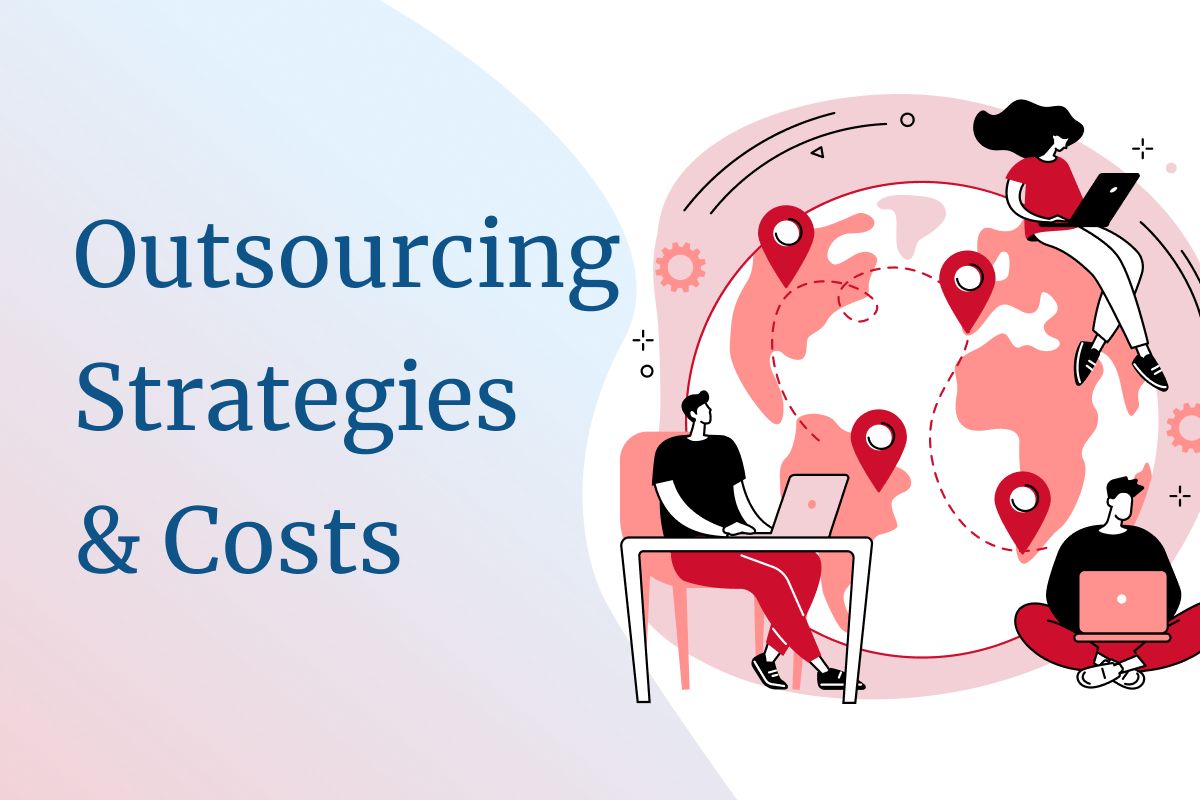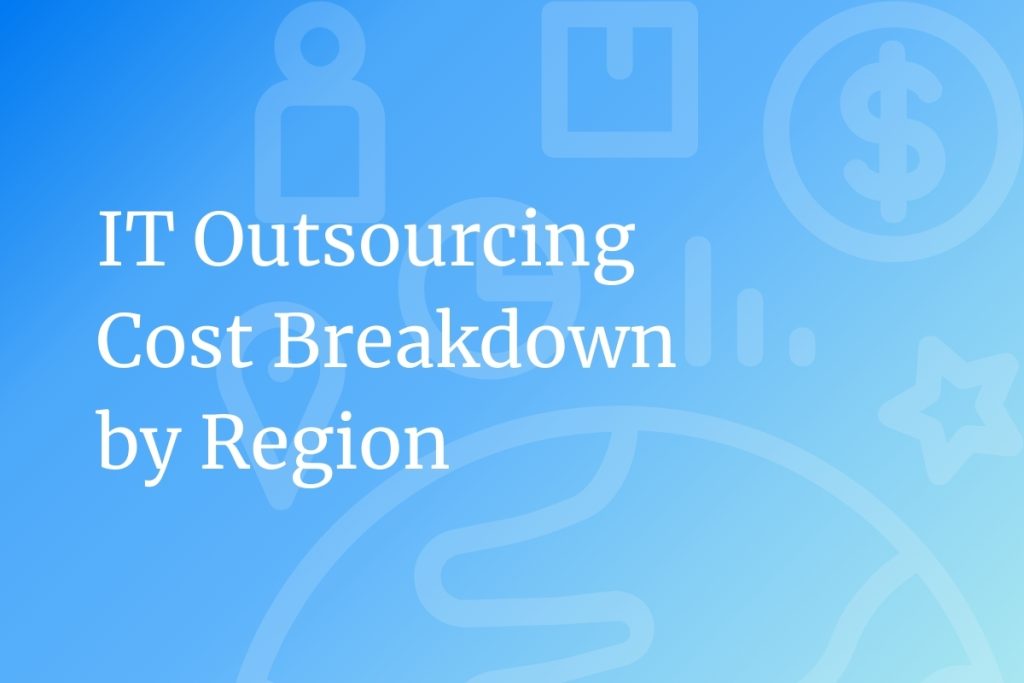Why Your Next Outsourcing Partner Should Be More Platform Engineer Than Code-Monkey
The days when outsourcing meant simply “give us code, we’ll deliver features” are waning fast. Modern software development is no longer just about writing modules — it’s about creating reliable, scalable, and self-servicing engineering ecosystems that support thousands of teams, microservices, cloud infrastructure, and ever-increasing developer expectations.
The future of outsourcing isn’t about finding the cheapest coder; it’s about partnering with an organization that architects velocity. It’s about moving from a “code factory” to an “innovation engine.” This shift is being driven by the rise of Platform Engineering and a relentless focus on Developer Experience (DevEx).
Enter the era of platform engineering: the discipline of designing and building internal developer platforms (IDPs) and toolchains that enable engineering organizations to move faster, more reliably, and with a better experience for their developers.
At SHIFT ASIA, we believe the most strategic outsourcing partnership today is one that helps you build your Internal Developer Platform (IDP) or that provides it directly.
What is Platform Engineering?
Platform Engineering is the practice of designing and maintaining an integrated platform that supports software delivery at scale. It provides developers with self-service tools, standardized workflows, and automated pipelines, enabling them to focus on building features rather than managing infrastructure.
At its core, Platform Engineering is about productizing the development environment. Rather than each team building and managing its own DevOps setup, Platform Engineers create reusable building blocks — environments, CI/CD pipelines, monitoring templates, and security baselines — all wrapped in a cohesive internal developer platform (IDP).
These platforms are often built on cloud-native architectures using container orchestration, Infrastructure as Code (IaC), and continuous delivery tools. The goal is to make the developer’s daily experience smoother, faster, and more consistent — turning DevOps complexity into a simple interface.
Another way to see it: where DevOps broke down the silos between dev and ops, platform engineering builds the structure to make engineering at scale sustainable. As one puts it, while DevOps once laid the foundation, platform engineering now builds the structure.
Key attributes of platform engineering include:
- Treating the platform as a product, with developers as the internal customers.
- Providing an “Internal Developer Platform” (IDP) or developer portal: a self-service interface where development teams can discover services, deploy applications, and manage environments.
- Abstracting away repetitive infrastructure, tooling complexity, and enabling standardized “golden paths” for common use-cases.
- Embedding compliance, security, observability, and cost‐governance into those shared services rather than pushing burdens onto each individual project.
Why Platform Engineering Matters Now
In 2025, software development is more complex, distributed, and demanding than ever before. Several forces are driving the move toward platform engineering:
Growing architectural complexity
Cloud-native technologies, microservices, containers, hybrid environments, and multi-cloud setups have made infrastructure and tooling more complex. Many development teams spend excessive time on “plumbing” rather than features.
Developer experience (DevEx) as a business metric
Organizations increasingly recognize that developer productivity, satisfaction, and onboarding time directly impact business speed and quality. Poor dev experience leads to turnover, delays, and technical debt. Gartner and others highlight DevEx as a key driver.
Demand for speed and reliability
The classic metrics — lead time for change, deployment frequency, and mean time to recovery (MTTR) — remain critical. A 2025 Internal Developer Portals report found that 75% of developers lose 6-15 hours per week due to tool sprawl. Platform engineering helps raise the baseline for all teams by standardizing workflows and environments rather than leaving each team to reinvent the wheel.
Cost, compliance, and governance pressures
As engineering scales, hidden costs from ad hoc infrastructure, misconfigurations, inconsistent tooling, and overprovisioning emerge. Platform engineering enables organizations to enforce guardrails, reduce waste, and improve compliance across the board.
Outsourcing and global delivery contexts
For organizations relying on outsourcing (offshore or nearshore), the need for consistency, developer onboarding, tooling alignment, and self-service becomes even more important. A well-designed platform enables remote teams to plug in seamlessly.
In short: platform engineering isn’t a luxury — it’s increasingly a must for high-performing engineering organizations. According to the Google Cloud survey, 55% of the global organizations have already adopted platform engineering.
Platform Engineering vs DevOps vs SRE
To avoid confusion: platform engineering does not replace DevOps or Site Reliability Engineering (SRE). Instead, it complements and elevates them.
- DevOps: A cultural and process movement aiming to break silos between development and operations, increase automation, collaboration, and speed.
- SRE: A discipline focusing on reliability, availability, and operational maturity, applying software engineering to operations.
- Platform Engineering: Focuses on building the shared infrastructure, tooling, workflows, and portals that empower development teams, standardize practices, and deliver self-service capabilities.
Think of Platform Engineering as DevOps for DevOps — creating a layer of abstraction that reduces cognitive load for developers, allowing them to innovate faster and safer.
The Role of Outsourcing in the Platform Engineering Era
Outsourcing has long been associated with development support, testing services, or maintenance work. But as software ecosystems grow, companies increasingly expect their outsourcing partners to deliver operational excellence, not just functional features.
From Code Factories to Platform Builders
Leading outsourcing firms like SHIFT ASIA are redefining their value proposition — moving from traditional development outsourcing to platform-centric enablement.
This means helping clients design, implement, and maintain internal developer platforms that power sustainable innovation.
Shared Responsibility for Developer Experience
In this new model, outsourcing partners contribute directly to improving DevEx. Instead of isolated development tasks, they help optimize CI/CD pipelines, integrate observability tools, and enforce security policies — all embedded in the platform.
Faster Onboarding and Reduced Friction
With a unified platform, outsourcing teams can onboard faster, deploy with confidence, and collaborate seamlessly with client teams. This reduces ramp-up time and ensures consistency across distributed environments.
Focus on Outcomes, Not Deliverables
Platform Engineering allows outsourcing teams to align with business outcomes — such as deployment frequency, recovery time, and performance benchmarks — rather than output-based metrics like code volume or test counts.
The Business Benefits of Platform Engineering for Outsourcing Partners
For an outsourcing firm such as SHIFT ASIA, embracing platform engineering offers multiple strategic advantages. Below are key benefits:
1. Faster Time to Market
By providing repeatable, well-tested platform services (pre-configured environments, templates, pipelines), teams can onboard new projects faster and deliver features with fewer roadblocks. Some organizations report dramatic reductions in provisioning time.
2. Improved Developer Productivity & Satisfaction
When developers spend less time dealing with infrastructure or toolchain friction, they spend more time on business logic, creativity, and innovation. This boosts retention, quality, and delivery velocity.
3. Consistent Quality, Compliance & Governance
Standardized platforms help enforce security, compliance, observability, and cost-control as part of the foundational layer rather than adding them later. This reduces risk, ensures compliance, and improves reliability.
4. Scalability and Efficiency
As outsourcing engagements scale across teams, geographies, and microservices, the cost of duplicated tooling, custom onboarding, and inconsistent environments grows. A platform approach centralizes that overhead.
5. Differentiated Outsourcing Value Proposition
In a crowded outsourcing market, positioning your firm as one that delivers platforms and developer experience —not just coding —sets you apart. You move from “we’ll code your app” to “we’ll enable your engineering ecosystem”.
How to Build a Platform Engineering Offering at SHIFT ASIA
Based on industry best practices and outsourcing realities, here’s a roadmap to build a compelling platform engineering offering:
Step 1: Define the Platform as a Product
Treat the platform team (or offering) like a product team: define internal customers (developers, QA, DevOps), define success metrics (time-to-onboard, deployments per day, developer satisfaction).
Step 2: Identify the “Golden Paths”
Map common workflows (e.g., variant of microservice deployment, front-end app delivery) and create standard templates, pipelines, and self-service checklists. These become the “paved road” that most teams follow.
Step 3: Build Self-Service Interfaces
Provide portals, service catalogs, CLI tools, or dashboards through which developers or outsourced teams can spin up environments, deploy, monitor, and manage apps. The ease of self-service is a key DevEx driver.
Step 4: Embed Guardrails & Governance
Ensure security policies, compliance checks, cost/capacity alerts, and observability templates are built into the platform so each project adheres to company/industry standards by default.
Step 5: Measure & Iterate
Gather developer feedback, track onboarding time, deployment frequency, incident count, and cost overruns. Use these to evolve the platform backlog. Continuous improvement emphasizes a product mindset.
Step 6: Align Outsourced Teams
For outsourced engagements, ensure your platform offering supports your onboarding, training, and integration of remote teams. Provide documentation, onboarding workflows, and enable them to plug into your self-service platform rather than starting from scratch project to project.
Common Challenges & How to Avoid Them
Platform engineering is powerful — but like any transformation, it comes with pitfalls. Here are some common challenges and how SHIFT ASIA can address them:
Over-engineering or building too big, too soon
If you try to build a “one size fits all” mega-platform from day one, you risk long delivery times and low adoption. Smaller, incremental launches focused on high-impact workflows are wiser.
New silos emerge
If the platform team becomes disconnected from developer teams, you may create a new “us vs them” situation. Keeping constant feedback loops and treating the platform as a service to developers is key.
Balancing control and autonomy
Excessive guardrails can frustrate developers; too much freedom and you lose standardization. Finding the right middle ground is crucial.
Underestimating change management and culture
Changing workflows, onboarding remote staff, and aligning tooling requires organizational and cultural work — not just technical delivery.
Ignoring cost and observability
A platform without built-in metrics, monitoring, and cost control can mask inefficiencies and risk spiraling costs.
By proactively recognizing these risks, SHIFT ASIA can lead engagements where platform engineering is not just a buzzword — but a delivered advantage.
How SHIFT ASIA Enables Platform-Centric Outsourcing
As a leader in software quality and development outsourcing, SHIFT ASIA brings years of experience in DevOps, automation, and solution architecture.
- Outsourcing specialty: As an outsourcing partner, SHIFT ASIA already has experience managing remote teams, multi-project delivery, diverse stacks, and client collaboration. That makes the case stronger for adding a platform layer to unify those efforts.
- Quality-first mindset: SHIFT ASIA’s emphasis on quality assurance, testing, and delivery reliability fits well with platform engineering’s focus on standardization, self-service, and operational guardrails
- Scale & consistency: For clients scaling development globally, a platform offering helps ensure consistent practices, onboarding, and cross-team alignment — a natural extension of outsourcing value.
- Innovation capability: By positioning ourselves as more than feature delivery but as a developer experience enabler, SHIFT ASIA can move up the value chain, becoming a strategic engineering partner rather than a vendor.
Key Contributions from SHIFT ASIA:
- Platform Consulting & Design: Assess client workflows and design optimal platform architectures for scalability and compliance.
- CI/CD Pipeline Automation: Build integrated pipelines supporting continuous delivery, testing, and deployment.
- Security & Quality Assurance: Embed QA automation and security validation directly into the platform for continuous verification.
- Cloud-Native Infrastructure: Utilize AWS to implement scalable, cost-efficient infrastructure.
- Ongoing Optimization: Use analytics and feedback to refine DevEx and performance metrics continually.
Future Outlook: The Next Stage of Platform Engineering
Platform Engineering is still evolving. Over the next few years, expect to see:
- AI-Driven Developer Platforms: Automated resource provisioning, intelligent debugging, and predictive observability powered by Gen-AI.
- Integrated Governance as Code: Security, compliance, and cost policies embedded directly into code pipelines.
- Cross-Functional Collaboration: Platforms bridging not just Dev and Ops, but also QA, Security, and Business Analytics.
- Open Ecosystems: Vendor-neutral platforms integrating seamlessly across cloud providers and third-party services.
For outsourcing partners and enterprises alike, this evolution means greater focus on collaboration, automation, and continuous improvement — the hallmarks of modern software excellence.
Conclusion
The Platform Engineering era is redefining how software is built, tested, and delivered.
It’s no longer about adding manpower to accelerate delivery — it’s about building the right systems that enable sustainable velocity, quality, and innovation.
Outsourcing partners like SHIFT ASIA are at the forefront of this transformation, helping organizations evolve from fragmented DevOps setups to cohesive, intelligent platforms that amplify developer experience and business value.
In this new era, success will belong to those who treat platforms as products and developers as customers — empowering teams to focus on what matters most: creating exceptional software that drives progress.
ContactContact
Stay in touch with Us




